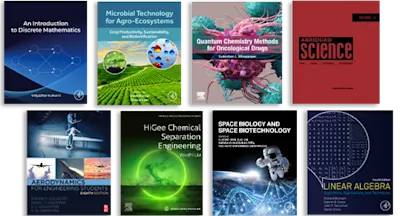
Brave NUI World
Designing Natural User Interfaces for Touch and Gesture
- 1st Edition - April 13, 2011
- Latest edition
- Authors: Daniel Wigdor, Dennis Wixon
- Language: English
Brave NUI World is the first practical guide for designing touch- and gesture-based user interfaces. Written by the team from Microsoft that developed the multi-touch, multi-use… Read more

Brave NUI World is the first practical guide for designing touch- and gesture-based user interfaces. Written by the team from Microsoft that developed the multi-touch, multi-user Surface® tabletop product, it introduces the reader to natural user interfaces (NUI). It gives readers the necessary tools and information to integrate touch and gesture practices into daily work, presenting scenarios, problem solving, metaphors, and techniques intended to avoid making mistakes.
This book considers diverse user needs and context, real world successes and failures, and the future of NUI. It presents thirty scenarios, giving practitioners a multitude of considerations for making informed design decisions and helping to ensure that missteps are never made again.
The book will be of value to game designers as well as practitioners, researchers, and students interested in learning about user experience design, user interface design, interaction design, software design, human computer interaction, human factors, information design, and information architecture.
- Provides easy-to-apply design guidance for the unique challenge of creating touch- and gesture-based user interfaces
- Considers diverse user needs and context, real world successes and failures, and a look into the future of NUI
- Presents thirty scenarios, giving practitioners a multitude of considerations for making informed design decisions and helping to ensure that missteps are never made again
Practitioners, researchers, students in user experience design, user interface design, interaction design, software design, human computer interaction, human factors, information design, information architecture, game designers
DEDICATION
PREFACE
ACKNOWLEDGMENTS
ABOUT THE AUTHORS
PART I. Introducing the NUI
Chapter 1. Introduction
Chapter 2. The Natural User Interface
Description
Application to NUI
Lessons from the Past: The First Apple Pad
Design Guidelines
Summary
Chapter 3. Ecological Niche
Description
Application to NUI
Lessons from the Past
Design Guidelines
Summary
PART II. Design Ethos of NUI
Chapter 4. Less Is More
Description
Application to NUI
Lessons from the Past
Design Guidelines
Summary
Chapter 5. Contextual Environments
Description
Application to NUI
Lessons from the Past
Design Guidelines
Summary
Further Reading
Chapter 6. The Spatial NUI
Description
Application to NUI
Lessons from the Past
Design Guidelines
Summary
Further Reading
Chapter 7. The Social NUI
Description
Application to NUI
Lessons from the Past
Inter-user Task Coupling
Design Guidelines
Further Reading
Chapter 8. Seamlessness
Description
Lessons from the Past
Application to the NUI
Summary
Further Reading
Chapter 9. Super Real
Description
Lessons from the Past
Application to the NUI
Summary
Further Reading
Chapter 10. Scaffolding
Description
Application to NUI
Lessons from the Past
Design Guidelines
Summary
Further Reading
Chapter 11. User Differentiation
Description
Application to NUI
Lessons from the Past
Design Guidelines
Summary
PART III. New Technologies: Understanding and Technological Artifacts
Chapter 12. The State-Transition Model of Input
Description
Application to NUI
Lessons from the Past
Design Guidelines
Summary
Chapter 13. Fat Fingers
Description
Application to NUI
Lessons from the Past
Design Guidelines
Summary
Chapter 14. No Touch Left Behind
Description
Application to NUI
Lessons from the Past
Sources of Error
Design Guidelines
Summary
Chapter 15. Touch versus In-Air Gestures
Description
Application to NUI
Lessons from the Past
Design Guidelines
Summary
PART IV. Creating an Interaction Language
Chapter 16. Mechanics, Dynamics, and Aesthetics
Description
Application to NUI
Lessons from the Past
Design Guidelines
Summary
Chapter 17. New Primitives
Description
Application to NUI
Lessons from the Past
Design Guidelines
Summary
Further Reading
Chapter 18. The Anatomy of a Gesture
Description
Application to NUI
Lessons from the past: Ambiguity
Design guidelines
Summary
Chapter 19. Properties of a Gesture Language
Description
Application to NUI
Lessons from the Past
Design Guidelines
Summary
Further Reading
Chapter 20. Self-Revealing Gestures
Description
Application to NUI
Lessons from the Past: Control vs. Alt Hotkeys
Design Guidelines
Summary
Further Reading
Chapter 21. A Model of the Mode and Flow of a Gesture System
Description
Application to NUI
Lessons from the Past
Design Guidelines
Summary
PART V. No Such Thing as Touch
Chapter 22. Know Your Platform
Description
Application to NUI
Lessons from the Past
Design Guidelines
Summary
Chapter 23. The Fundamentals Have to Work
Description
Application to NUI
Lessons from the Past
Design Guidelines
Summary
Further reading
Chapter 24. Number of Contacts
Description
Application to NUI
Lessons from the Past
Design Guidelines
Summary
Further Reading
Chapter 25. Contact Data: Shape, Pressure, and Hover
Description
Application to NUI
Lessons from the Past
Design Guidelines
Summary
Further Reading
Chapter 26. Vertical, Horizontal, and Mobile
Description
Application to NUI
Lessons from the Past
Design Guidelines
Summary
PART VI. Process: How Do You Get There?
Chapter 27. The User-Derived Interface (UDI)
Description
Application to NUI
Lessons from the Past
Design Guidelines
Summary
Further Reading
Chapter 28. Lessons in False-Gesture Recognition
Description
Application to NUI
Lessons from the Past
Design Guidelines
Summary
Further Reading
Chapter 29. RITE with a Purpose
Description
Application to NUI
Lessons from the Past
Design Guidelines
Summary
Further Reading
Chapter 30. A Word About Engineering
Description
Lessons from the Past
Application to NUI
Summary
Index
- Edition: 1
- Latest edition
- Published: April 13, 2011
- Language: English
DW
Daniel Wigdor
DW